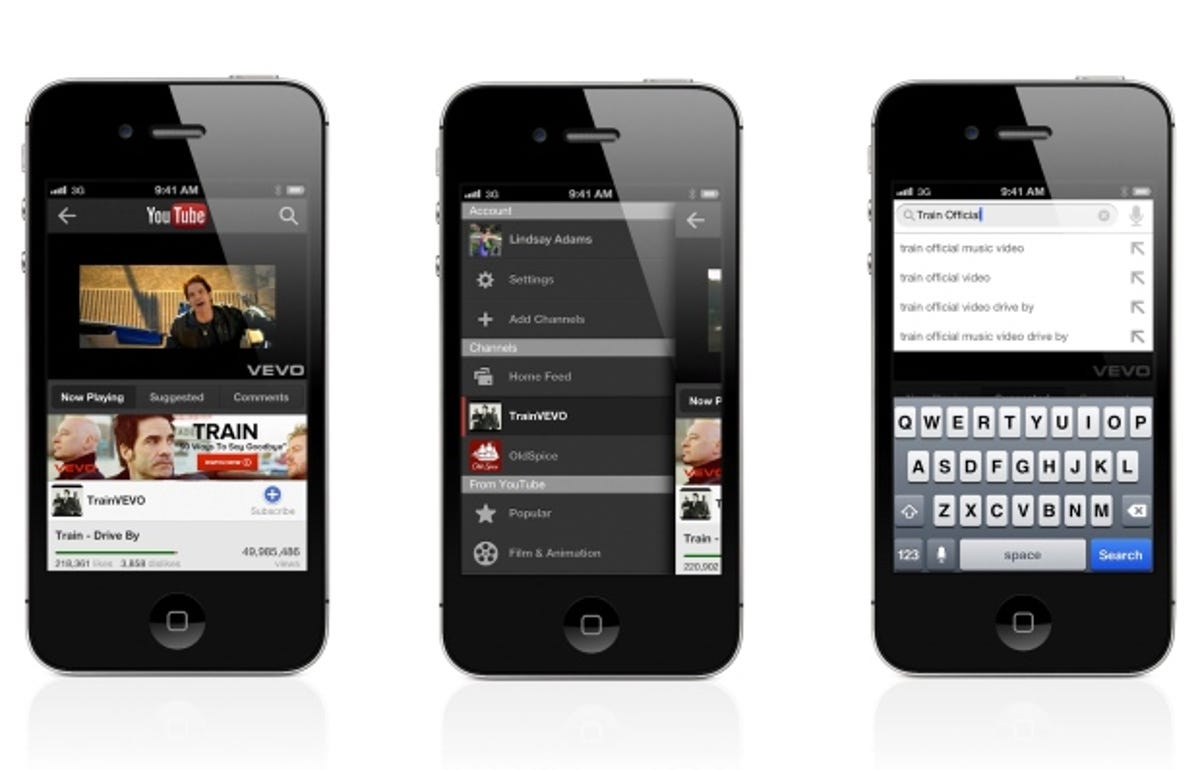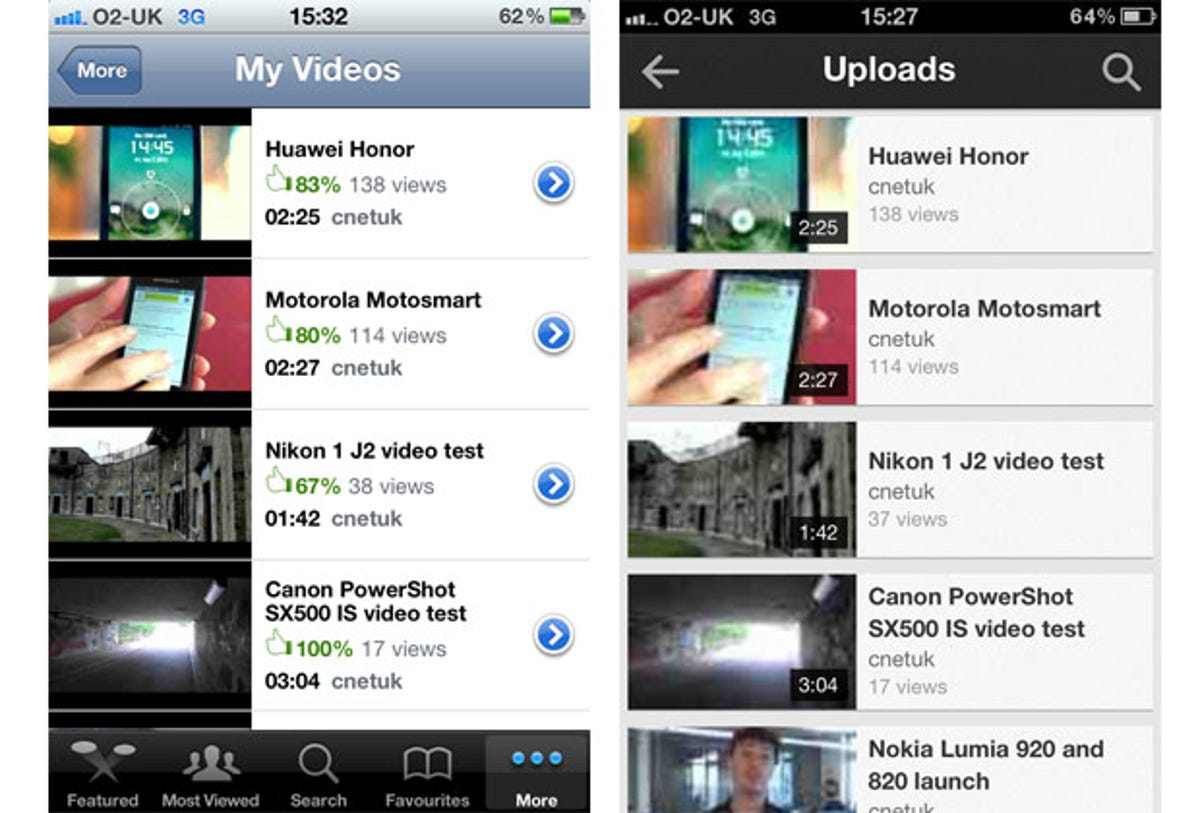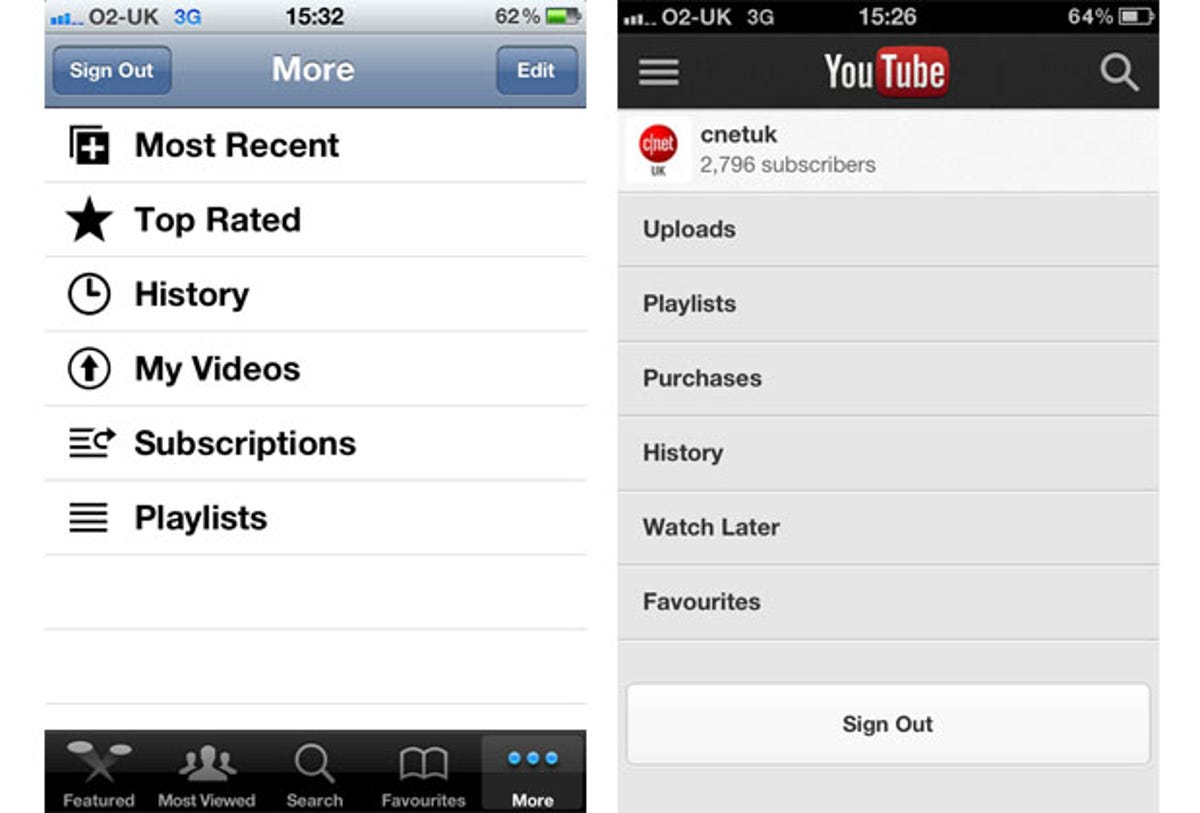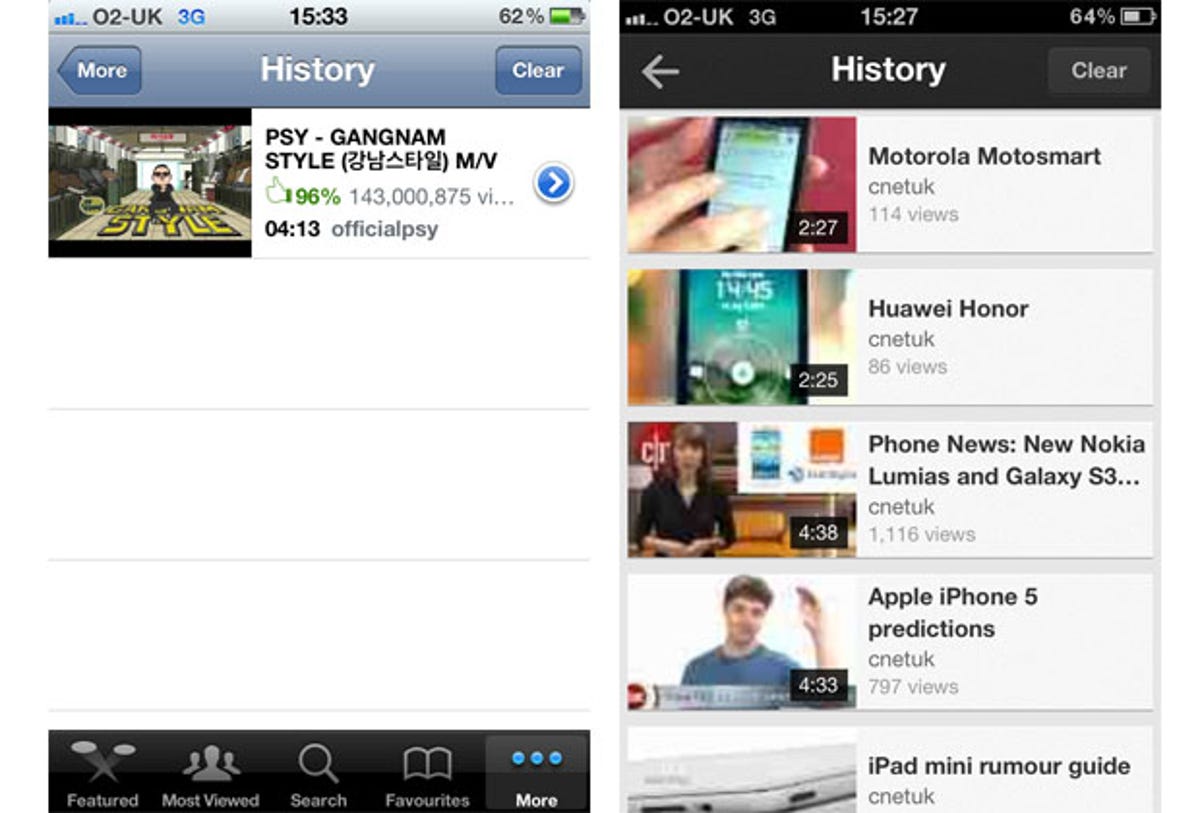
On 19 September — two days before the iPhone 5 is out — we’ll wave goodbye to iOS 5, and with it some trusty pre-installed chums such as YouTube and Google Maps, which will be replaced with Apple’s own software in iOS 6.
Google’s counter-strike against this blatant attempt by Apple to further distance itself from its main mobile competitor is to pre-emptively release its own official YouTube app for the iPhone and iPod touch, which has recently appeared on the App Store.
If you still want immediate access to YouTube from your iPhone’s homescreen, you’ll have no choice but to download the new Google app, for as soon as you upgrade to iOS 6, the current version will be forever gone.
How then do the two apps measure up? There are some things we won’t know until iOS 6 arrives, such as whether opening YouTube links in emails will direct you to the app, or open in Safari. Thanks to Google showing up early at this party though, most of the changes I can tell you about already.
Spot the icon
I can’t be the only person with an iPhone who has gazed unblinkingly at the display, scrolling back and forth through the homescreens feeling puzzled at my inability to find that little brown telly box. No matter what you set as your background, the current YouTube app icon is a master of disguise, with camouflage skills to rival the SAS.
But ta-da! Look at Google’s shiny new icon. All that red and black and white. The colours and patterns your eyes intuitively search for the moment you think ‘YouTube’ are right there, ready to swim into view at a second’s notice. What a relief.


Design and menus
Both Apple and Google have stayed true to their design roots when it comes to their respective YouTube apps. Apple’s is typically minimalist and blends in with other pre-installed iOS apps, while Google’s is more colourful, more complex and more reminiscent of its Android and browser-based counterparts. (In all the following screenshots, Apple’s YouTube app is on the left and Google’s new app is on the right.)


The iOS 5 app has five simple options and one menu, whereas the Google version offers multiple menus and more diverse options. It is prettier to look at than the iOS app, but the sheer quantity of options makes it feel a little like Google is over-complicating something that should be very simple.
I’d wager that most of the time when you use YouTube on your phone, you
rarely utilise any other function than ‘search’, except maybe ‘recently watched’ or ‘favourites’.


One thing the current iOS YouTube app does feel like it lacks is one main homescreen. The closest thing to it is the ‘Featured’ tab, which is brimming with stuff you’re never likely to watch. The homescreen on the Google app displays similar content, but it is very clearly a central feed. Those who use Facebook on their phones will also be familiar with the swipe-left action to bring up the main menu.


Personalised features
The ‘Featured’ videos on the iOS 5 app remain the same no matter what, leaving the homescreen bloated with nonsense (X Factor audition videos anyone?).
Signing in to your YouTube account on the Google version really does pay off though, as the app will remember what you like and will replace the chaff with content you’re actually interested in. Check out the difference logging in makes, in the before and after shots below.


Similarly, the ‘History’ feature on the iOS 5 app will only remember videos you’ve watched on your phone, regardless of whether or not you’re logged in. The same feature on the official Google app, however, will be linked to your YouTube account and display videos you’ve watched while logged in on any device.


Finding new content
The current iOS app offers a simple row of icons along the bottom of the screen with the option to
look at ‘Featured’ or ‘Most Viewed’ videos. The latter then provides tabs for ‘Today’, ‘This Week’ and ‘All’.
It’s questionable how useful the ‘All’ option is, given that everyone under the Sun must by now have watched the panda doing a sneeze and Charlie biting his brother’s finger. The first two options do give you an idea of which videos have recently been trending on YouTube though, which could be useful if you’re stuck for something to watch.
One thing that can be said for the official YouTube app is that it’s not short on ways to discover new videos. In the main menu there’s a scrollable list of all the individual channels you’re subscribed to, followed by a long list of the various YouTube categories — the most notable of which are obviously ‘Pets’ and ‘Science and technology’. There’s no option to watch recently trending videos as on
the iOS 5 app — or the near-identical official Android version — but
instead it has a generic ‘Popular’ feed.
Once again, wading through all this extra padding does raise the question as to whether this plethora of options is really necessary on a phone app. Apple’s ‘less is more’ policy probably wins out here, given that most people are unlikely to spend much time aimlessly browsing through videos at random on their phones anyway.


The age of advertisements
If you’re starting to think that perhaps having to download this new-fangled YouTube app might not be the end of the world, then well done you. You clearly have a healthy, positive attitude to embracing change.
But one of the most significant changes the new app will bring is the introduction of ads, which will precede videos much as they do in the browser version. No longer will you be safely cocooned in an innocent ad-free world — the Mad Men are invading your mobile screens, and there ain’t a thing you can do about it.
Have you downloaded the new YouTube app yet? Which version do you prefer? Reel off your compliments and complaints in the comments below or over on our Facebook Page.



